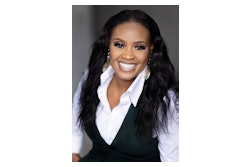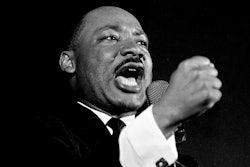Replacing Rhetoric with Research
Two scholars with ties to the University of Chicago aim to shed light on Black life in the 21st century.
By Susan E. Smith
Chicago’s South Side has long been a renowned laboratory for groundbreaking research on Black urban life.
Dr. E. Franklin Frazier wrote The Negro Family in Chicago in the 1930s. Dr. St. Clair Drake and Horace R. Cayton authored Black Metropolis: A Study of Negro Life in a Northern City in the 1940s. And acclaimed sociologist William Julius Wilson wrote The Truly Disadvantaged in the 1980s.
The city’s vast Black population, largely the product of the Great Migration, has made Chicago the home of both a celebrated Black middle class and an unsettling Black lower class. These two extremes have been meticulously documented over the years through a distinct style of sociological fieldwork known as the Chicago School.
Now, more than 60 years after the publication of Black Metropolis, Dr. Mary Pattillo, a professor of sociology at Northwestern University, and Dr. Cathy J. Cohen, a political science professor at the University of Chicago, are doing research that reflects the new dynamics of Black urban life in the 21st century, as internal conflicts take on a more important role in Black studies.
Pattillo’s book, Black on the Block: The Politics of Race and Class in the City, published earlier this year, studies the gentrification of poor Black neighborhoods. And in February, Cohen released the “Black Youth Project,” widely considered to be the first comprehensive national examination of the attitudes and beliefs of today’s young Black population.
Both women were mentored by scholars who made a mark in their respective fields: Pattillo worked closely with Wilson in the 1990s as a graduate student at the University of Chicago; and Dr. Michael Dawson,
a leading expert on Black political behavior, was on Cohen’s dissertation committee in the 1980s at the University of Michigan.
“You come away with an understanding of the problems of the Black middle class,” Wilson says of Pattillo’s work, “and why the experiences of Black middle-class families are so unique and lead to social outcomes that differ from those of the White middle class.”
Dawson describes Cohen’s youth study as “breaking new ground.
“Many outside of and within the Black community have seen Black youth of this generation as a problem,” he says. “All of these factors make it quite important to understand the dynamic and life challenges of young Black people.”
Unlike Pattillo, Cohen’s research is not strictly rooted in Chicago, but both scholars emphasize the differences within the Black community. And both are credited with expanding the boundaries of Black studies during a period that has seen group dynamics shift from the consensus that often defined the civil rights era to the internal conflicts of recent years.
Many of the changes, scholars have said, are fueled by an economic climate that has marginalized low-income Blacks.
A Ground-floor View
In her 1999 book Black Picket Fences: Privilege and Peril Among the Black Middle Class, which won the American Sociological Association’s Oliver Cromwell Cox Best Book Award, Pattillo offered a ground-floor view of how the challenges in middle-class Black communities differ from those in White communities. She contended that middle-class Black neighborhoods often serve as buffers between poor Black enclaves and White communities, countering the assumption that the Black middle class has escaped proximity to the Black poor.
In her more recent book, Black on the Block, Pattillo used community meetings and interviews to examine the interactions among residents when the Black middle class gentrifies a poor Black neighborhood —
a familiar scene in many of Chicago’s South Side communities.
The story behind Black Picket Fences explains Pattillo’s interest in sociology and her topic. Pattillo says Wilson’s The Truly Disadvantaged led her to graduate school at the University of Chicago.
“But I was interested in [the book] for what it didn’t say,” she says.
Raised in a middle-class community in Milwaukee, Pattillo felt that the dynamics of the Black middle-class existence had been overlooked as urban researchers “started to put more focus on poverty.”
In The Truly Disadvantaged, Wilson noted that poor and unskilled Blacks were trapped in dead-end communities; meanwhile, middle-class Blacks moved out as jobs left the inner cities and housing barriers came down.
But Pattillo eventually questioned where — and how far — those middle-class Blacks were going, given continuing discrimination. When Black migration into previously all-White communities hits a certain point, studies show, Whites begin to move to new neighborhoods.
While The Truly Disadvantaged never stated that middle-class Blacks landed in neighborhoods that resembled those of their White counterparts, critics have argued that the book left that impression. Wilson has countered that the book focused mainly on the depopulation of inner-city communities as jobs moved elsewhere.
Pattillo’s books on the middle class explore issues that Wilson did not set out to examine, he says, adding that her work is an important addition to understanding current changes in Black urban neighborhoods.
“When [Cayton and Drake] wrote, the Black communities in Chicago were heavily populated. A lot of these communities have since seen depopulation,” Wilson says.
“This represents an important change in the formation of Black communities.”
Mythologizing Blacks
While Pattillo looks at class contradictions among Blacks, Cohen’s “Black Youth Project” attempts to replace rhetoric about Black youth with research.
Her study, funded by the Ford Foundation, asks Blacks, Whites and Hispanics between the ages of 15 and 25 questions ranging from their opinions on homosexuality to hip-hop music to their political future. The results of the study are available at https://blackyouthproject.com/.
“I kept seeing Black leaders talking about Black youth without research, evidence or citation, and they felt most comfortable mythologizing Black people,” says Cohen. “The press seems unwilling and unable to analyze these statements. It seemed an opportunity to let young Black people speak for themselves, as opposed to having adults who haven’t been young for a long time represent them.”
The study is analyzing the lyrics of hundreds of hip-hop songs, and complements Cohen’s broader research on who sets the political agenda for Blacks.
The concept was the topic of her 1999 book, The Boundaries of Blackness: AIDS and the Breakdown of Black Politics.
“While for Whites there is a homogenous group called Black people,” says Cohen, “there are real and significant differences
that the best scholars try to pay attention to.”
A Tradition of Intense Inquiry
In the introduction to the 1945 edition of Black Metropolis, author Richard Wright summarized Chicago’s appeal: “Chicago is the city from which the most incisive and radical Negro thought has come.”
But Wright also hinted at the underbelly of the city, which was the setting of his despairing novel, Native Son. “I felt those extremes of possibility, death and hope,” he also wrote in the introduction.
Dawson echoes Wright’s sentiments more than 60 years later.
“[Chicago] has one of the second-largest African-American communities in the United States and one of the most diverse in terms of class and economic background, and a strong and large Black middle class,” he says. “But it also has some of the most devastating conditions that African-Americans outside of the South have lived in, especially related to [the projects].”
Wilson says Chicago’s importance in the study of Black life had more to do with the University of Chicago than the city itself. “You had a collection of scholars in the university interested in changes in the city,” he says, referring to Drs. Robert E. Park, Ernest Burgess, Louis Wirth and a long list of others associated with the Chicago School of Sociology.
In that tradition of intense inquiry and meticulous fieldwork, Pattillo moved into the neighborhood she studied in her books. She says she hopes her research will help middle-class residents engage in politics that will benefit the entire community.
“We middle-class minorities are cognizant of our roles and the times at which our behaviors are against the interest of African-Americans,” she says.
Scholars aren’t isolated from social change, agrees Cohen, who adds that the study of Black life should help the nation fulfill “its promise of equality and justice.”
“Wilson showed that you can do rigorous work in the academy that can also improve people’s lives,” she says. “That is the ultimate goal in doing academic work.”
There are currently 0 comments on this story.
Click here to post a comment
© Copyright 2005 by DiverseEducation.com


















